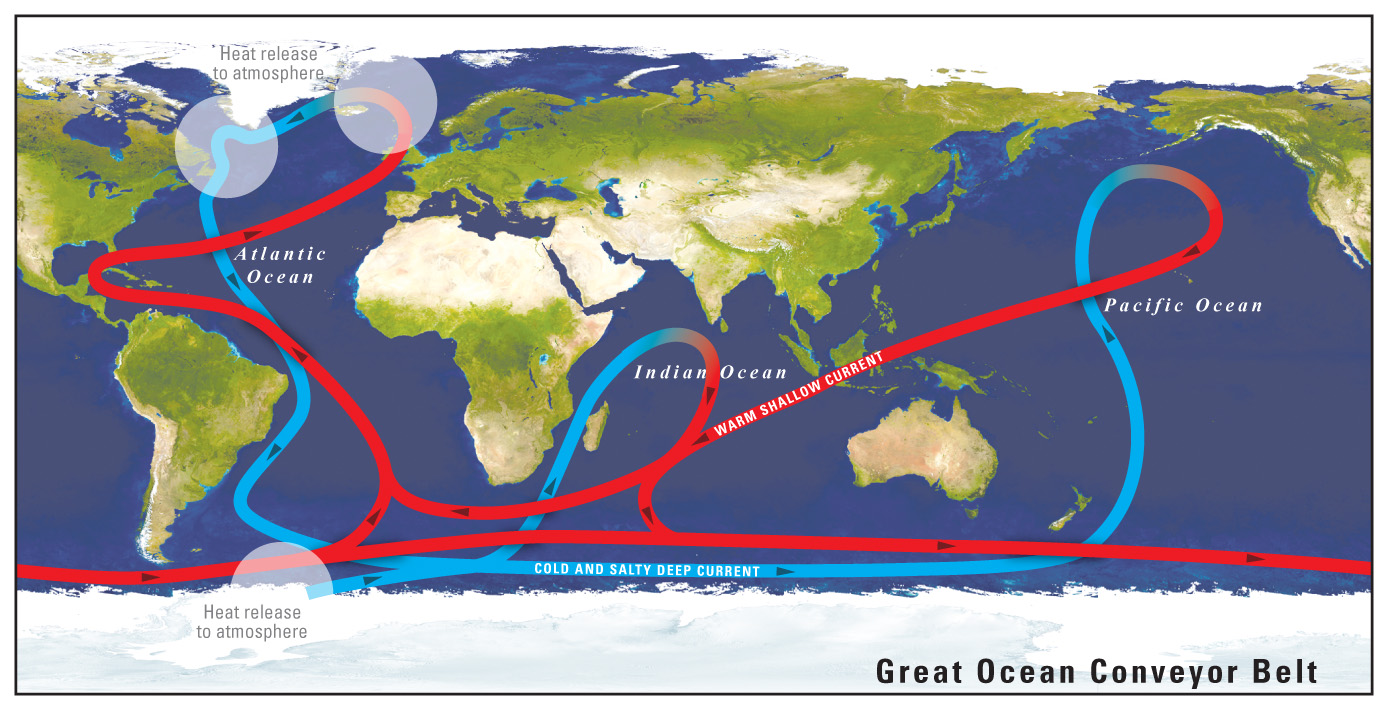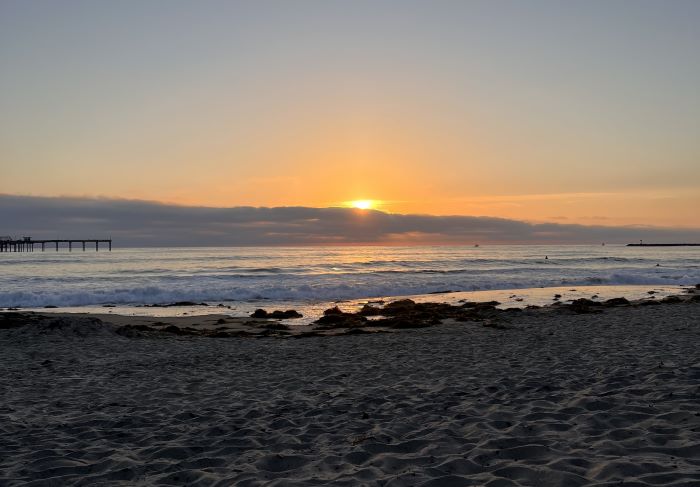Atlantic vs Pacific Ocean: Which Ocean is Better?
NOTE*** The content on this page may contain affiliate links, we may make a commission. And, as an Amazon Associate, we earn from qualifying purchases. More information: disclosure page.
When trying to plan your next coastal US beach trip, you may be wondering if you should head east to the Atlantic Ocean or west to the Pacific. You may find yourself asking, which is better, the Atlantic or the Pacific?
“Which ocean is calmer, the Atlantic or the Pacific?”
The Pacific Ocean is overall calmer and warmer than the Atlantic, although the coastline for each spans the entire American continent. Local differences (think surfing in California) in each ocean are found along the coast.
Whether you’re heading to the beach with young children or looking for the next wave to catch, your decision could be influenced by several factors.
Is the Pacific Ocean Calmer than the Atlantic?
Discovered and named in 1519 by the Portuguese explorer Ferdinand Magellan, the Pacific literally means “peaceful” or “calm”. Therefore, many associate the Pacific with a serene, still body of water. However, it should come as no surprise that this is a common misconception as the Pacific is, well, an ocean.
Another common assumption about the two is that the waters of the Pacific Ocean are warmer than the Atlantic. Yet, sometimes we may experience the opposite: warmer waters on the Atlantic shores and cooler waters on the Pacific.
In general, the oceans share many similarities. However, some key differences between the Atlantic and Pacific may help you decide which coast to visit next. Read on as we provide clarity on some questions you may have.
(By the way, if you’re looking into renting an RV for your beach trip, be sure to check out these posts:)
- 7 Best Beaches on the Oregon Coast for Kids
- How to Rent an RV for an Epic Road Trip: Helpful Beginner’s Guide
- 25 Expert Tips for Renting an RV for the First Time
Which Ocean is More Dangerous: the Atlantic or the Pacific?

We’ve all seen “Titanic” and immediately think of the Atlantic Ocean as the more treacherous of the two. However, this is not necessarily true and is extensively debated amongst seafarers. While the Atlantic is generally considered the more treacherous of the two the Pacific can – at times – be more dangerous given its vast size and unpredictable weather conditions.
Dangers of the Pacific Ocean
According to the National Oceanic and Atmospheric Administration (NOAA), the Pacific Ocean is both the largest and deepest ocean on Earth. Spanning over 60 million square miles, the Pacific covers 30% of the Earth’s surface and holds roughly half of the earth’s free water.
Due to its expansive area, waves that form in the Pacific can build up and swell to great sizes. The Pacific also tends to be unpredictable, given its susceptibility to climatic changes.
Hurricanes in the Pacific tend to be large and disastrous, and there are also many species of tropical venomous sea life to be aware of.
Dangers of the Atlantic Ocean
Compared to the larger Pacific Ocean, the 40 million square miles of the Atlantic Ocean cover only about 20% of the Earth’s surface. However, due to its exposure to coastal winds, strong currents, and rapid fluctuations in temperature, conditions on the Atlantic can be extremely dangerous.
Also known for strong hurricanes and coastal storms, the Atlantic is considered by many to be more dangerous than the Pacific.
So Which is More Dangerous? It depends.
Overall, when debating if the Atlantic or Pacific Ocean is rougher, the answer is a frustratingly vague “it depends.”
If you’re planning to snorkel over coral reefs in the Pacific, you may be subject to jellyfish stings or catch the eye of a shark. On the other hand, if you’re planning a long catamaran voyage across the Atlantic, you may find strong currents and unexpected storms plaguing your trip.
No matter which coast you decide to head towards, we recommend you do extensive research ahead of time and be prepared for whatever dangers you may face.
Which Ocean is Warmer: Atlantic or Pacific?

Image source: United States Geological Survey (USGS)
The Earth’s oceans create a very complex system. Constantly moving, the oceans essentially form a giant water conveyor belt. This conveyor belt is driven by a combination of water temperature and salinity. Warmer waters with less salt rise to the surface of the oceans while cold, saline water sinks lower.
When considering whether the Pacific or Atlantic is warmer, it’s easy to believe that the more tropical Pacific ocean houses warmer waters.
However, when you factor in this conveyor belt of differing water temperatures, you can see that the temperature of both oceans fluctuates depending on the area.
Overall, water in the Pacific Ocean is generally warmer than water in the Atlantic Ocean. Aside from the water conveyor belt, this difference is also due to size.
The Pacific Ocean is larger, giving it more time to build up heat as it moves and circulates. In addition, the Pacific covers over three times as much area around the equator as the Atlantic. This helps the Pacific obtain more heat from that region, resulting in warmer waters.
Why Does the Water Feel Cooler on the West Coast than the East Coast?

Here’s where things get tricky. We’ve discussed how the Pacific Ocean, in general, has warmer waters than the Atlantic Ocean. Yet you may come to find out that once you’ve visited both coasts, the opposite may seem true.
As we discussed earlier, ocean water is continuously moving. In the northern hemisphere, this movement generally runs clockwise. Warmer currents are carried north along the west side of an ocean. Once the current gets pulled to the east, it cools back off and gets pushed back south. As it heads south, it warms back up until reaching its warmest point. The current then heads back west, completing its cycle.
This pattern results in the west sides of both the Pacific and Atlantic oceans being warmer than the east sides. Additionally, their southern borders are warmer than their northern ones.
Thus, our West Coast receives the cooler current of the Pacific Ocean’s east side. Conversely, our East Coast adjoins the warmer currents of the Atlantic’s west side. Therefore, even though the Pacific Ocean is warmer overall, the water along our Pacific coast may feel cooler than along our Atlantic coast.
Whichever Coast, Plan Ahead
Regardless of which coast you decide to travel to, keep these basic safety tips in mind to ensure an unforgettable trip.
Though we’ve already clarified some common misconceptions about the Atlantic and Pacific oceans, it’s important to be prepared for what to expect once you arrive.
Read ahead to find out how to best prepare for your trip.

Safety tips for the beach:
- Take and wear life jackets
- Strictly obey all beach rules and safety signposts
- Swim only in designated swimming areas
- Never swim alone. Always swim with a buddy
- Know where lifeguards are stationed
- Children should always have adult supervision and proper flotation devices
- Know the current and forecasted local weather conditions
- Be cautious and observant of sudden weather changes
- Be aware of strong underwater rip tides
- Know if there are poisonous marine creatures in the area, such as the Portuguese man-o-war or jellyfish, and be able to identify them
Safety tips for boating:
- Know the current and forecasted weather conditions for where you are and where you’re headed
- Keenly observe current water conditions
- Perform safety checks of the boat
- Make sure there are enough personal flotation devices (PFDs) for everyone on board
- Navigate along safe routes and avoid dangerous waters
- Create a detailed emergency plan
- If there is any news of unfavorable weather conditions, turn back
Knowing these basic safety rules can keep you and your family safe while enjoying the US coastlines.
The US coastline houses a variety of different, exciting cultures and numerous world-famous beaches. Each of its beaches offers varying landscapes and unique experiences that will cater to an unforgettable trip.

Is the Pacific Ocean Safer Than the Atlantic Ocean Overall?
Many factors contribute to determining whether the Pacific Ocean is less dangerous overall than the Atlantic.
While there’s no clear answer whether the Pacific is really calmer or warmer than the Atlantic, what we can agree on is that oceans can be equally dangerous – and equally awe-inspiring.
As long as you travel during the right season and – with a little luck – the right weather conditions, you should be able to enjoy a safe trip to either one.
Wherever your travels take you, we hope that you remember some of the important safety tips we shared here. No matter the destination, be sure to visit our Etsy store beforehand to find some helpful printable planners and journals. We have something for everyone, whether you need help mapping out your trip route, detailing your grocery list, or keeping track of your favorite campsites.
Happy traveling!

And, if you’re looking for suggestions on your next dreamy destination, check out these blogs:
- 3 Best Road Trip Routes from Texas to Colorado
- San Francisco Bay Area to Oregon: Ultimate Roadtrip Intinerary
- Amazing Places to Camp in Glenwood Springs, CO

Hi, I’m Shauna – Welcome to Family Travel Fever. We are a large family, that was bitten by the travel bug! We travel with kids and extended family. I take the kids by myself sometimes because I don’t mind flying or driving solo with my crew to discover the coolest places.
Sign up for our email list for my best travel tips plus get the family travel planner free.






